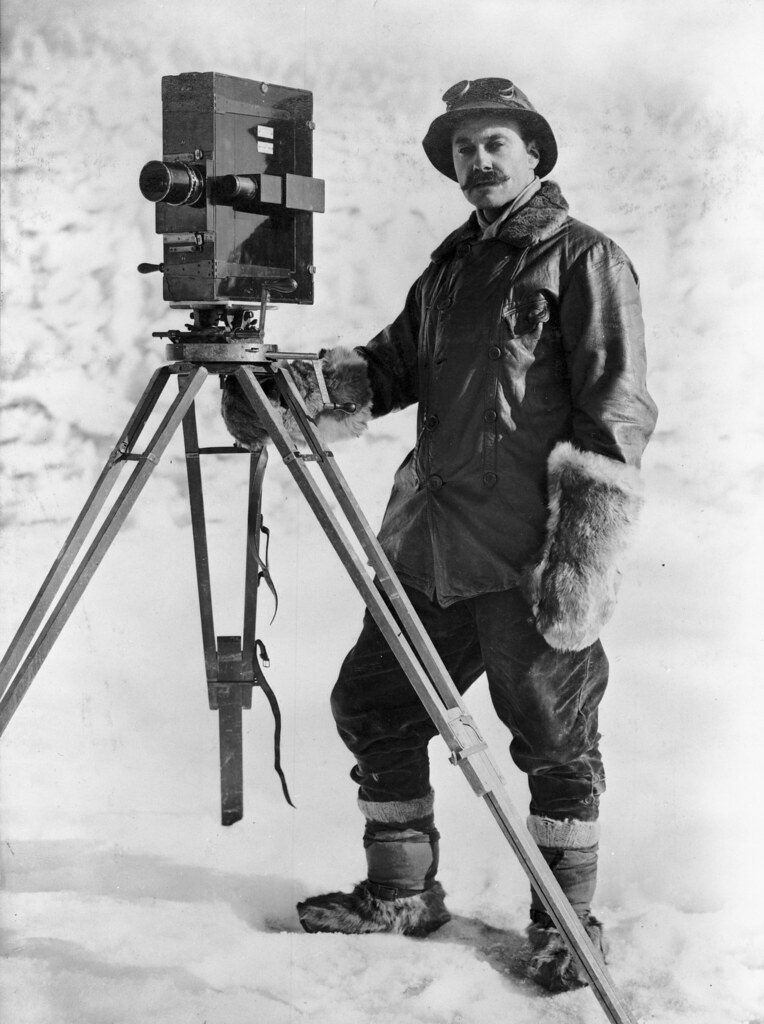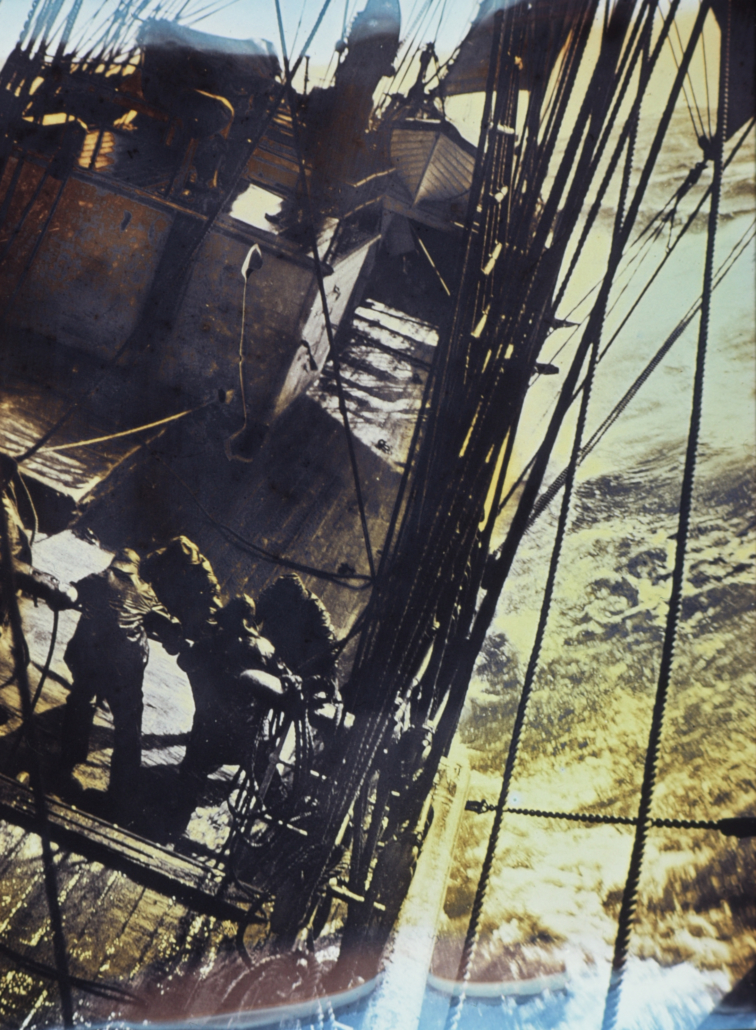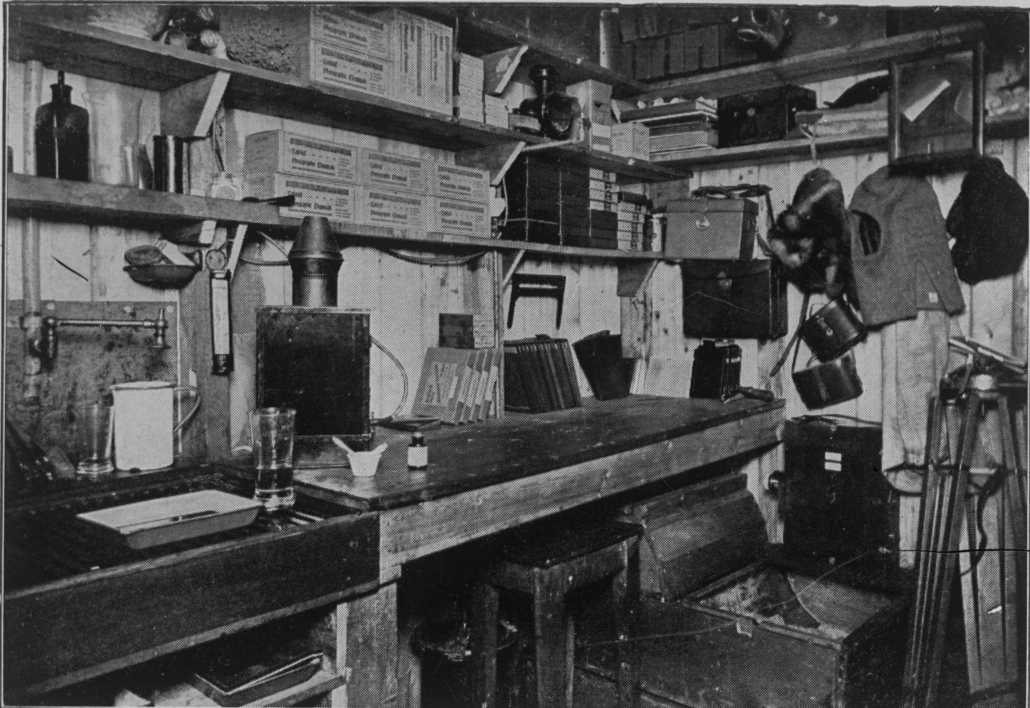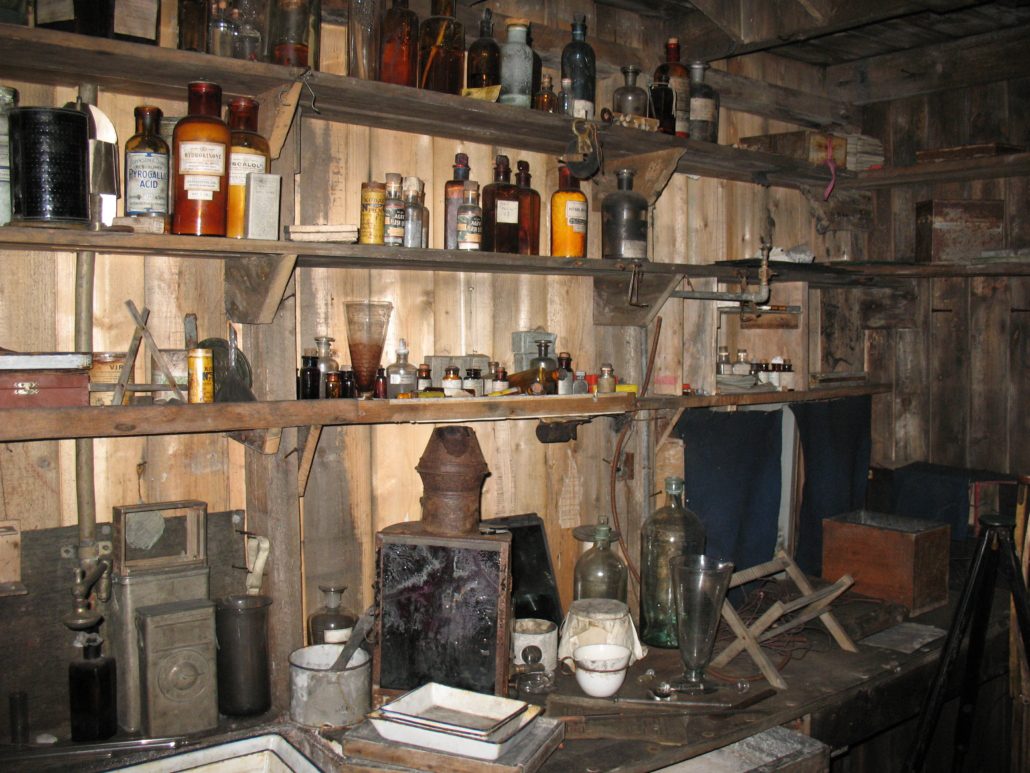Herbert George Ponting Series
Since the early days of Antarctic exploration, scientists and explorers have shared their experiences in many creative ways. One of these key figures is Herbert George Ponting. During his time on the ice he captured some of the most enduring images of the Heroic Age of Antarctic Exploration.
Ponting was a professional photographer and is best known as the expedition photographer and cinematographer for Captain Robert Falcon Scott’s Terra Nova expedition 1910-1913. During his time on the ice, Ponting captured some of the most enduring images of the Heroic Age of Antarctic Exploration. However, Ponting was convinced his colleagues thought he attracted bad luck:
“If anyone had listened, they would have heard the echo of Jonah murmuring in the wind. There was little doubt as to who was wearing the Jonah Medal on this expedition” – Ponting
A long-established expression and standing joke from Scott’s preceding expedition, on-board the Discovery was the term ‘a Jonah’, to mean a member whose presence on board brings bad luck and endangers the ship. It all began on the third day bound for Antarctica. As the ship rolled through a wave, Ponting almost broke his leg and lost his finest camera overboard. Ponting’s ill luck struck again whilst photographing a school of eight Killer Whales. As he rushed to the ice edge it was heaved up from under him as whale after whale rose to split it up. Shortly after depriving the whales of lunch, Ponting and his sledge of equipment nearly went through thin ice, while he scarcely avoided being run over by a runaway pony and sledge.
The ‘curse of the camera’ constantly struck Ponting, “I was once again the butt for no end of twittering about the peril of ‘Ponting’… for the more I protested… the more persistently these crimes were fastened on to me.” – H.G. Ponting
From ‘Jonah’ to Inspiring Explorer – To boost morale during the long, dark and cold Antarctic winter Scott scheduled the scientists and officers to give regular lectures on their field of expertise. It was during these lectures that Ponting’s status on the Terra Nova expedition greatly improved from ‘Jonah’ to inspiring explorer! He stunned his colleagues with his previous photographic work, and showed that he had developed a whole new dimension to the recording and understanding of the Antarctic. Scott’s vision of taking Antarctica to the world was to be fulfilled beyond his wildest expectations. Through his skill, tenacity and adaptation to the Antarctic conditions, Ponting opened everyone’s eyes, providing lessons to members of the expedition so the standard of photographic work on their scientific field parties was second to none.
“The expedition went photography crazy and Jonah’s be damned.” – D.M. Wilson (The Lost Photographs of Captain Scott).
By world standards, Ponting was an exceptional artist and technician. He had already developed many abilities in field photography, so different from the controlled situation of the studio. The voyage through the Southern Ocean and into Antarctica took his ability to a whole new level. He seemed to relish the challenge, working long hours and developing new techniques to counter the cold, the wind, and the ever changing light. Compared to the point and shoot ease we have today where a camera or smartphone can be produced from a warm pocket in a moment, Ponting had the added pressure of using large and heavy equipment requiring its own sledge to transport, as well as maintaining accurate exposures and developing on site in variable temperatures in his darkroom at Cape Evans. Ponting’s images are compelling for several reasons; he advised his pupils to add human features for scale, he composed his images with careful foreshadowing and echoed the main shapes and features in the image to lead the eye into the central object. It was through Ponting’s own work and his teachings that the Terra Nova expedition became renowned in history for its photography of maximised scientific, historic and aesthetic interest.
Ponting’s legacy: the beginnings of documentary film – Ponting returned from the Terra Nova expedition after the first year with a catalogue of over 1700 negatives and ca. 25,000 feet worth of film, and set to work. Alongside Scott and the expedition’s chief scientist, Dr Edward Wilson, Ponting had filmed the breeding cycles of many Antarctic species. Despite tough working conditions including seal bites and skua attacks, his work revealed previously unknown behaviours of many Antarctic species. Ponting’s work on the Terra Nova expedition moved beyond the bounds of travelogues or scenic imagery, it became the very forefront of polar wildlife documentary film-making.
For more information about Ponting, his camera equipment and his legacy check out Science and Media Museum and watch this incredible trailer for Ponting’s 1924 film The Great White Silence, restored by the British Film Institute.








 Antarctic Heritage Trust
Antarctic Heritage Trust